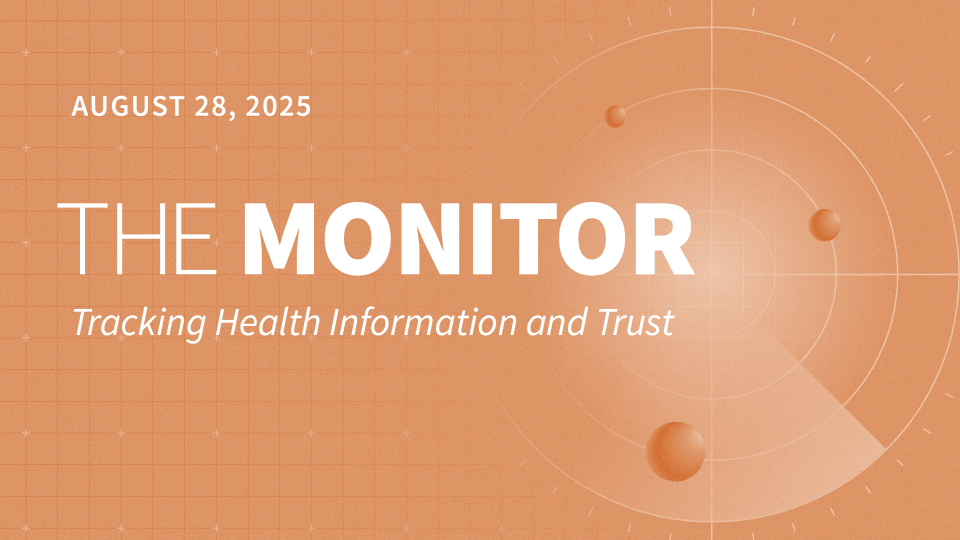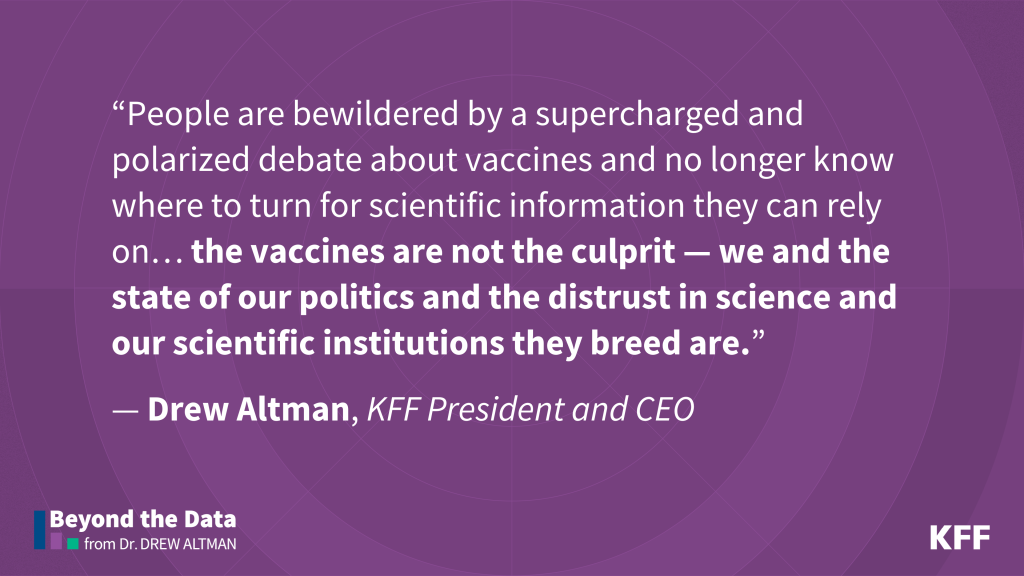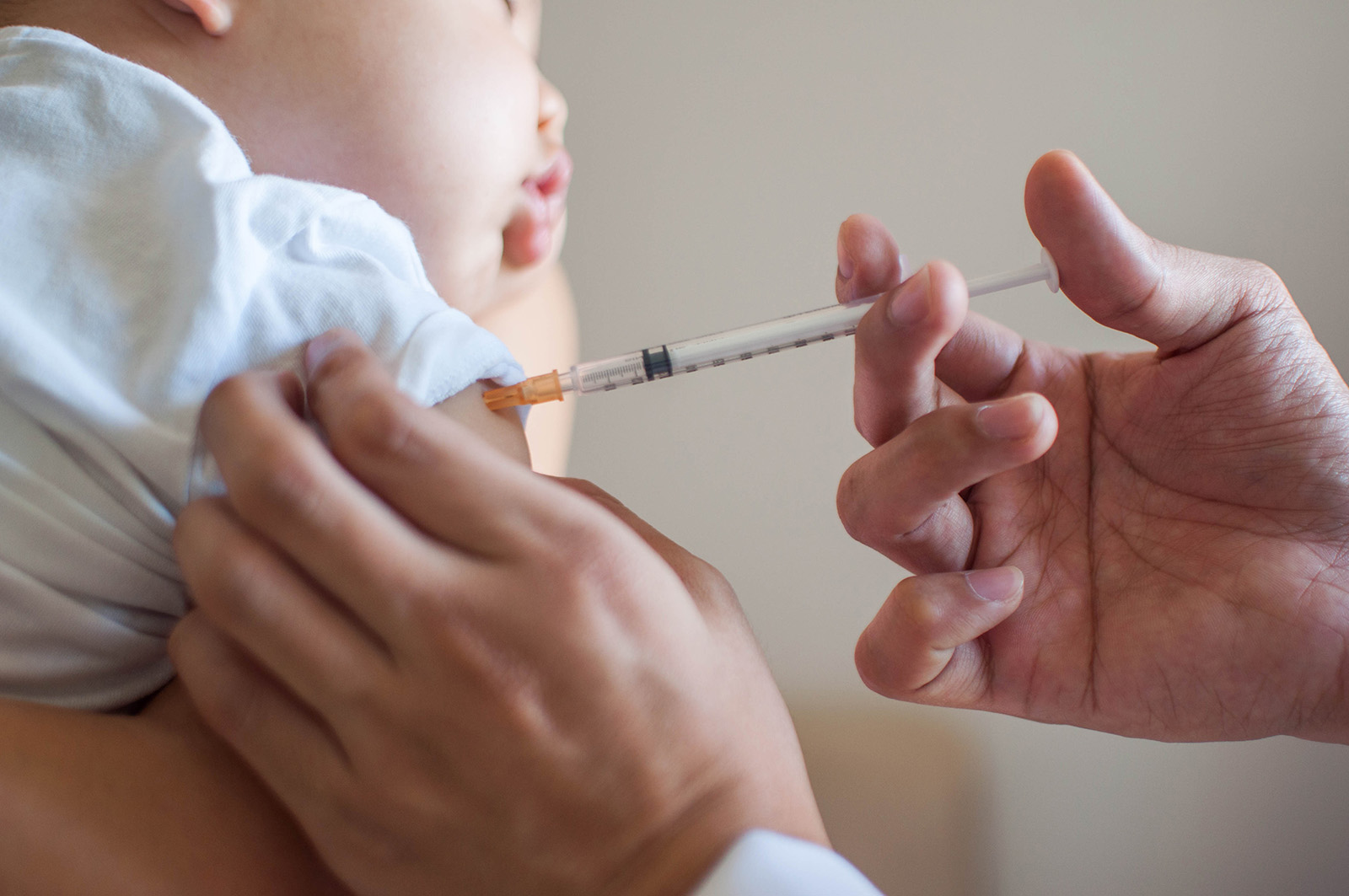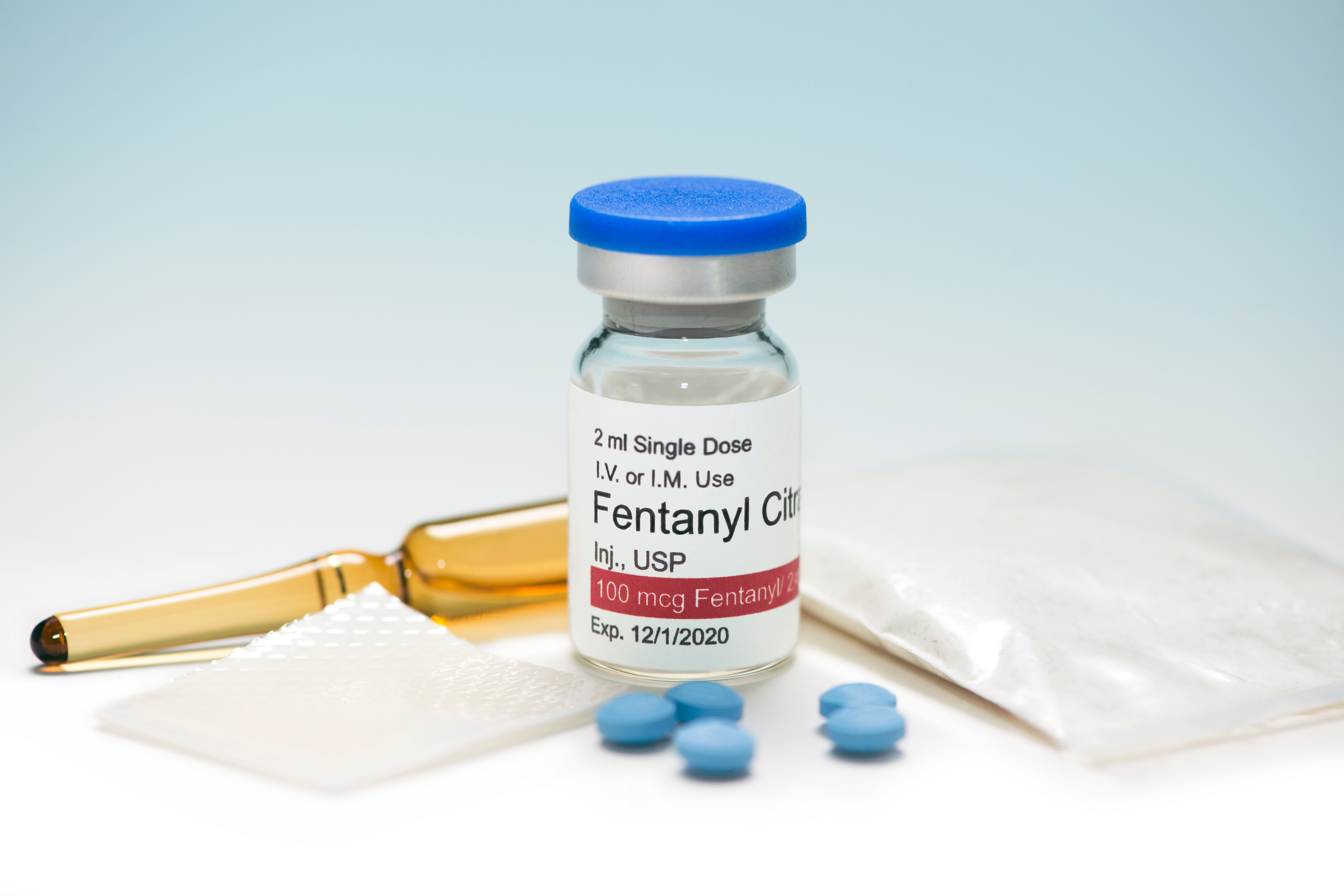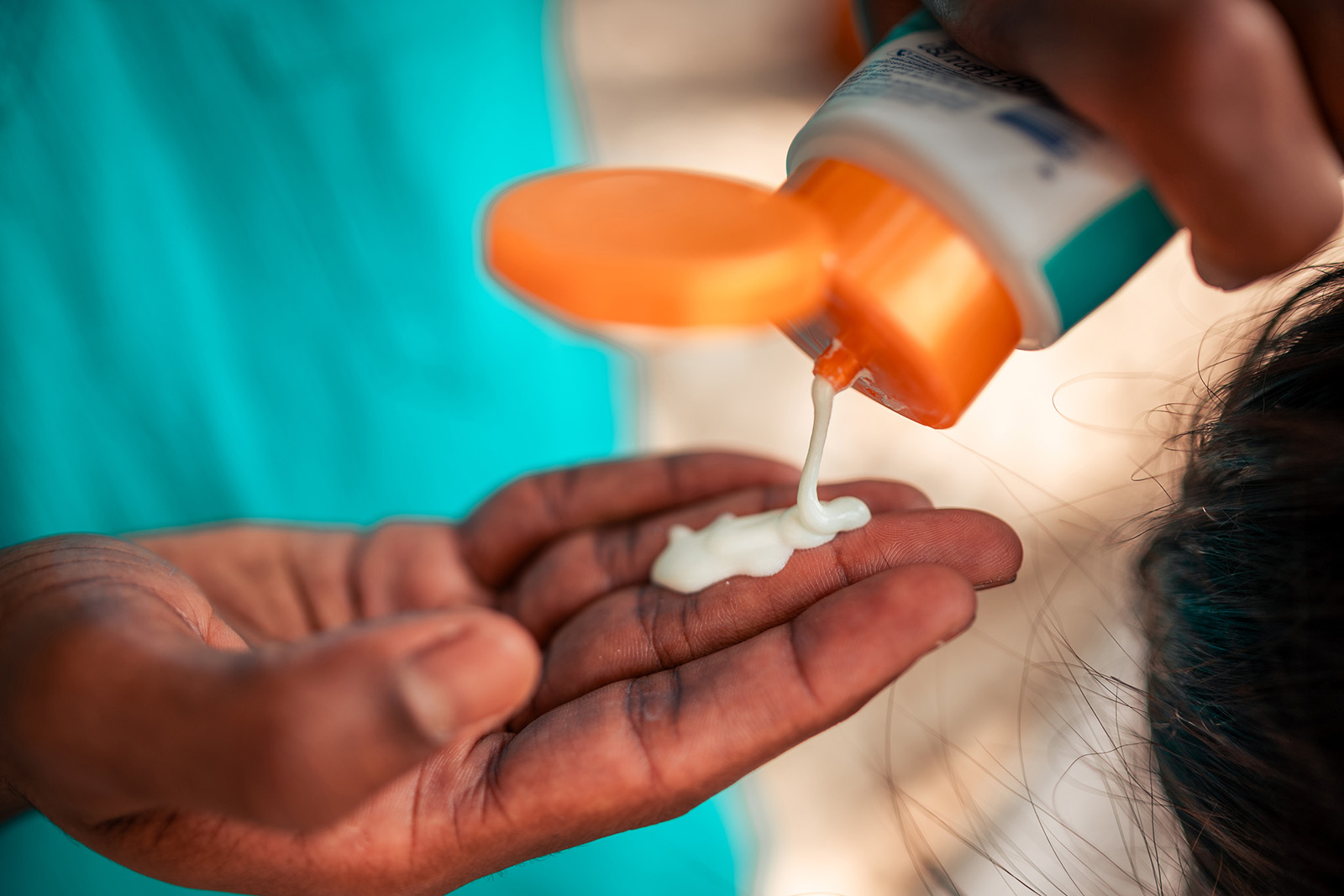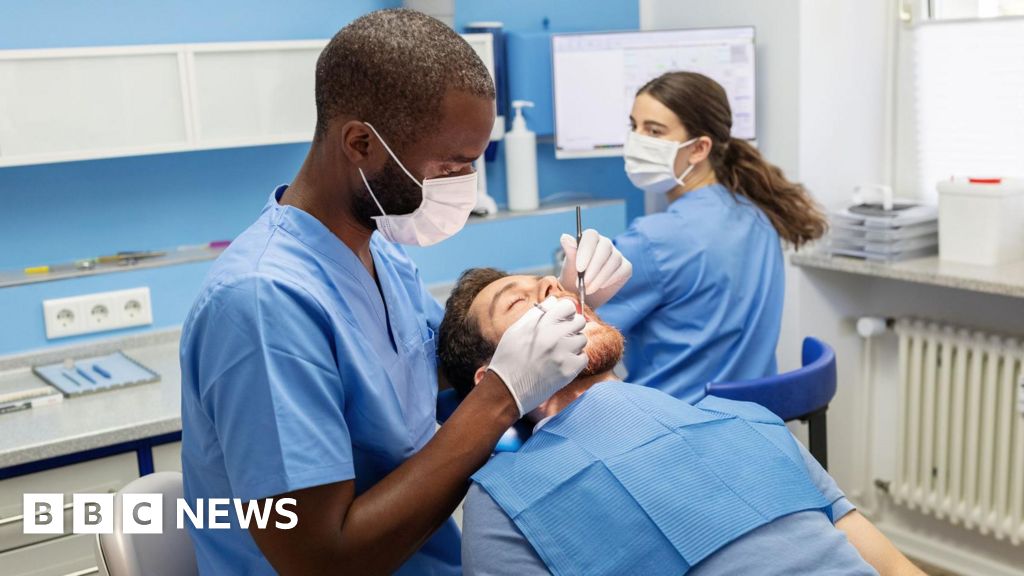VOLUME 29
Summary
This volume highlights new research showing that certain prompting techniques can help reduce the risk of AI chatbots amplifying false medical information when users include fabricated terms in their queries. It also examines false claims linking vaccines to sudden infant death syndrome and the promotion of the industrial solvent dimethyl sulfoxide as an allegedly suppressed cancer cure despite a lack of clinical evidence. Lastly, it explores misunderstandings among first responders about the risks of overdose from fentanyl exposure and ongoing myths about sunscreen safety.
Featured
The Problem Isn’t Trust in Vaccines, It’s That People Don’t Know Who to Trust
In last week’s “Beyond the Data” column, KFF’s CEO, Dr. Drew Altman, draws on years of KFF polling about vaccines and writes that uncertainty about vaccines stems not from lack of confidence in their safety but from eroding trust in sources of health information, leaving many unsure where to turn for reliable guidance. As Altman notes in the column, just 16% of the public believe mRNA vaccines are unsafe, but only 14% of the public say they have a lot of trust in federal health agencies like the Centers for Disease Control and Prevention (CDC) and Food and Drug Administration (FDA) to ensure the safety and effectiveness of vaccines. The result: the majority of Americans are uncertain and unsure what to believe.
AI & Emerging Technology
Chatbots Prone to Hallucinations When Prompted with Fabricated Terms
Artificial intelligence (AI) chatbots can convincingly amplify false claims when false medical information is embedded within user questions, according to new research published in Communications Medicine. The study, conducted by researchers at Mount Sinai Medical Center, tested how leading large language models (LLMs) respond when fictional medical terms are included in patient scenarios. The researchers created 300 hypothetical cases containing fabricated diseases, symptoms, or medical tests to evaluate whether chatbots would identify and reject the false information.
Without additional safety prompts, the AI responses regularly contained hallucinations, a phenomenon that occurs when an LLM fabricates false information instead of relying on evidence. In 65.9% of responses, the chatbot expanded on the fictional medical details, generating confident explanations about treatments for non-existent conditions like “Faulkenstein Syndrome.” Researchers suggested that users may unknowingly include false information in their health queries to AI chatbots, from unreliable sources or misremembered medical terms, and may receive responses that not only repeat but expand upon those inaccuracies.
The study also demonstrated, however, that including additional safeguards in the prompt could reduce this risk. By asking the AI models to use only clinically validated information and acknowledge uncertainty, the rate of hallucinations dropped to 43.1%. The researchers suggested that additional safeguards built into AI models, or included in user prompts, help mitigate the risks of chatbots amplifying false health information. The findings demonstrate the need for further education about AI, including around proper prompting techniques. An August 2024 KFF poll found that most adults (56%) were not confident in their ability to tell the difference between what is true and false when it comes to information from AI chatbots. Users may benefit by developing new prompting strategies, particularly when using AI for health information where falsehoods can cause particular harm. Framing prompts with accurate, verified details, or including safeguards in the prompts, could help prevent chatbots from repeating false information, enhancing their reliability and usefulness.
Recent Developments
False Claims Link Vaccines to Sudden Infant Death Syndrome
Widely-shared social media posts in early August repeated unsubstantiated claims that routine childhood immunizations are associated with sudden infant death syndrome (SIDS). The claims circulated online this summer following the publication of a review, authored by a researcher who has previously published studies claiming that vaccines are unsafe, that alleged without evidence that vaccines cause SIDS. One X user, with nearly 800,000 followers, falsely alleged that children who died of SIDS were killed by the vaccine industry. Another account, with more than 100,000 followers, called for a ten-year ban on all vaccines, implying that such a ban would lead to “a society without SIDS” and other illnesses like cancer and autism.
Claims of an association between childhood vaccinations and SIDS have persisted for decades, largely citing the temporal association between the recommended vaccination schedule and incidence of SIDS. Cases of SIDS peak around 2-4 months of age, coinciding with the timing of recommended early childhood vaccines. Multiple large-scale studies, though, have found no causal link between childhood vaccines and SIDS. Research has identified multiple factors that may contribute to SIDS risk, including sleep position, maternal smoking, and premature birth, but vaccination is not among them. Rates of SIDS sharply declined after the American Academy of Pediatrics (AAP) introduced safe sleep guidelines for infants, then stabilized in the 2000s during the same timeframe that the childhood vaccination schedule expanded. Some studies have found that vaccinations may in fact be associated with a lower risk of SIDS.
Polling Insights: Recent KFF polling has found that notable shares of parents are coming across vaccine-related content on social media. In KFF’s July Tracking Poll on Health Information and Trust four in ten parents (41%) reported seeing information about vaccines on social media in the past 30 days. Previous KFF polling has found that about a third of parents (36%) say they are “not too confident” or “not at all confident” that they can tell what is true versus what is false when it comes to information on social media.
As parents are exposed to vaccine information online, the July Tracking Poll also found that many express distrust in the CDC and in local public health departments when it comes to providing reliable information about vaccines. Overall, four in ten parents say they trust the CDC “not much” or “not at all” to provide reliable information about vaccines and a similar share (38%) express distrust towards their local public health department.
Dimethyl Sulfoxide, An Industrial Solvent, Promoted as Suppressed Cancer Cure
Some influential X accounts with large followings have promoted dimethyl sulfoxide (DMSO), an industrial solvent and byproduct of paper production, as a “miracle cure” for a range of health issues, often portraying past regulatory restrictions on the substance as evidence of a deliberate suppression of an effective treatment. Social media posts in late July and early August have claimed that the solvent can treat conditions including blindness, tinnitus, skin issues, and cancer. One X account, with more than 1.8 million followers, described a combination of DMSO and the histologic stain hematoxylin as “The 50-Year-Old Cancer Miracle Hiding in Plain Sight” and said that the FDA “chose to bury the evidence.” Other accounts also presented unsupported claims about DMSO as a cancer cure as evidence of a conspiracy, including one with more than 300,000 followers who claimed that the FDA banned the substance despite knowing that it “cured cancer” and “made chemo more likely to work.”
DMSO, which penetrates the skin quickly and is used in some transdermal drug delivery systems, was tested in the 1960s as a pain reliever, but trials were halted after research showed abnormal changes in the eyes of laboratory animals. Research has since continued into DMSO’s potential for pain relief, including for pain from osteoarthritis, but has yielded inconsistent results. The FDA has approved DMSO for treating symptoms of interstitial cystitis, which remains the only FDA-approved use of the substance. While its effectiveness in treating cancer has also been investigated, claims that it is a “cure” overstate the available evidence. Some research in laboratory settings has shown that it may have anti-cancer properties, but other studies have found it may increase the rate at which cancer cells multiply, and no large-scale clinical trials have demonstrated its effectiveness for treating cancer in humans. DMSO has also been shown in some research to adversely interact with effective cancer treatments, including platinum-based chemotherapy drugs like cisplatin, carboplatin, and oxaliplatin.
It has nonetheless been promoted by alternative medicine advocates for decades, and some science communicators have theorized that the FDA’s effective ban of the chemical may have contributed to advocacy for its use. The substance’s promotion as a cancer cure, despite a lack of evidence, may cause patients to delay treatment, which is known to lead to higher mortality rates. Its popularity mirrors unsupported claims about ivermectin’s ability to treat cancer and demonstrates the potential for unproven and potentially harmful treatments to gain attention as trust in health authorities declines.
Police Video Highlights Ongoing Misunderstandings About Fentanyl Overdose Risk
Widespread misunderstandings about brief skin contact with fentanyl continue to shape public perception and emergency protocols, despite a decline in opioid deaths that began in mid-2023 and continued through 2024.In early August, a video of a police officer collapsing after handling evidence during an arrest was widely shared on social media, contributing to discussion about the risk of fentanyl exposure among law enforcement. According to the local sheriff’s office, the officer handled a dollar bill containing fentanyl without gloves and was administered naloxone and transported to a local hospital. The sheriff’s description has not confirmed fentanyl as the cause, but it has reinforced misconceptions about the drug, with some commenters falsely suggesting that brief skin contact with fentanyl could cause an overdose. A former narcotics officer repeated the claim on cable television, saying that merely touching fentanyl “could kill someone.” Others, though, including an X user who identified himself as a medical doctor, stated that physical absorption of fentanyl through such brief contact was not possible.
The misunderstanding that brief skin contact with fentanyl can cause an overdose can be traced to a 2016 Drug Enforcement Administration (DEA) video that warned law enforcement officers that such contact could be fatal. Fentanyl can be absorbed through the skin, but a joint statement from the American College of Medical Toxicology (ACMT) and the American Academy of Clinical Toxicology (AACT) clarified that small, unintentional skin exposures to fentanyl powder or tablets are “very unlikely” to cause significant opioid toxicity. According to the statement, it would take 14 minutes with both hands covered with high-absorption fentanyl patches to receive a therapeutic dose. Risk may be greater for workers in certain high-risk situations, like a drug storage or distribution facility where the potential for longer duration exposure is higher, and the National Institute for Occupational Safety and Health (NIOSH) has recommended higher levels of personal protective equipment (PPE) when larger quantities may be encountered.
Studies have found no confirmed cases of fatal overdoses among first responders due to contact with the drug, and there have been no documented cases of harm from incidental exposure. Still, the perceived risk among first responders remains high, and misunderstandings about the potential of accidental overdose have shaped emergency response protocols. These concerns may result from conflating brief contact during routine emergency calls with prolonged, high-concentration exposures which carry higher risks. A KFF Health News article reported that these misconceptions may have contributed to some first responders being warned to proceed with caution when responding to an overdose. This has prompted concern among some public health advocates that misunderstandings of risk could lead to delayed interventions such as CPR and rescue breaths, techniques that are recommended by the Substance Abuse and Mental Health Services Administration (SAMHSA) as essential steps in responding to opioid overdoses.
Sunscreen Claims Persist as UV Protection Remains Important
Misleading claims that sunscreen is ineffective or toxic have circulated on social media through late summer, with some influencers promoting the idea that chemical sunscreens cause more harm than sun exposure itself. One post, from an account with more than 1.1 million followers, claimed that an increase in melanoma rates was associated with the “toxic chemicals” found in commercially available sunscreen. Others promoted alternative sun protectants, like beef tallow, and claimed that vitamin D from sun exposure helped reduce cancer risk.
Claims that ingredients in sunscreen are toxic may have originated with a 2020 study that found some chemical ingredients, including oxybenzone and avobenzone, were systematically absorbed by the body in concentrations that exceed the FDA’s limit for requiring further safety testing. The FDA has requested further safety data on these chemicals, but the agency has noted that the fact that an ingredient is absorbed does not mean it is unsafe, nor does its request for additional information. There has been no conclusive evidence that these chemicals are harmful, and dermatologists have noted that they have been safely used for decades. The FDA continues to recommend the use of sunscreen, along with other sun-protective measures, like limiting time in the sun. Some posts also referenced recent recalls of sunscreen products containing benzene, a known carcinogen, incorrectly associating it with oxybenzone and avobenzone. Melanoma diagnosis rates have risen alongside increased use of sunscreen, but this trend also coincided with greater public awareness and improved diagnostic tools. Exposure to ultraviolet (UV) radiation from sun exposure is a known risk factor for developing skin cancers like melanoma, and trials have shown that regular use of sunscreen significantly reduces this risk. There is no evidence that vitamin D reduces the risk of skin cancers, and evidence shows that regular sunscreen use does not cause vitamin D deficiency.
Ongoing myths about supposed harms of sunscreen may lead some to discontinue use, resulting in higher rates of the most common and preventable forms of cancer. UV rays remain a year-round concern, as fall and winter months can still present significant UV exposure. Damage from sun exposure is cumulative, and contributes both to skin cancer risk and accelerated aging. The FDA recommends use of broad spectrum sunscreens with SPF values of 15 or higher.



